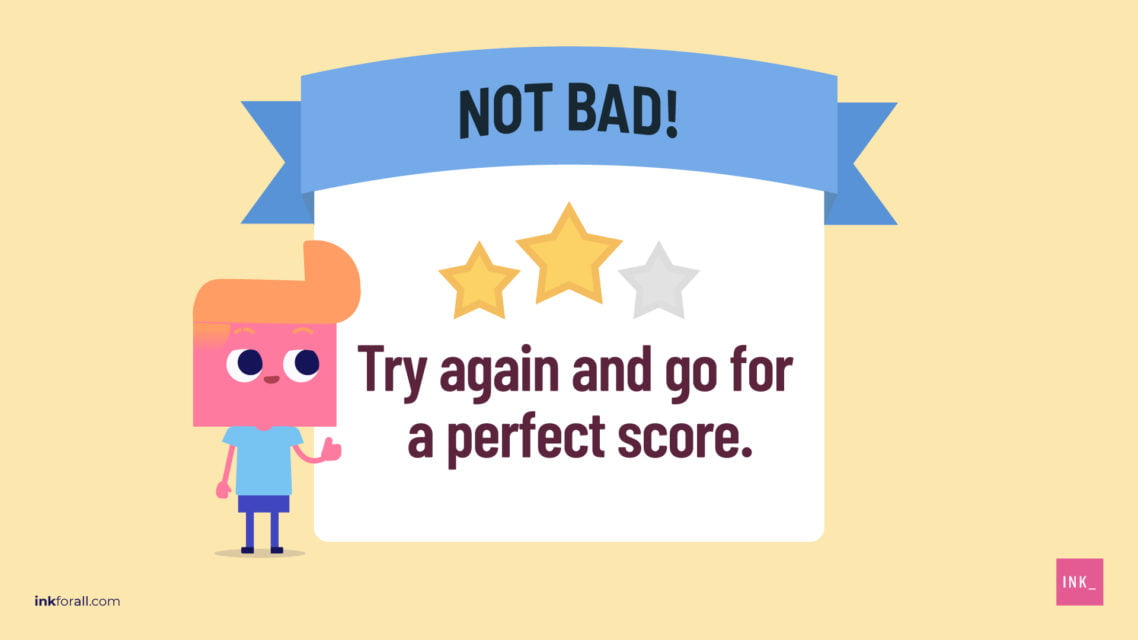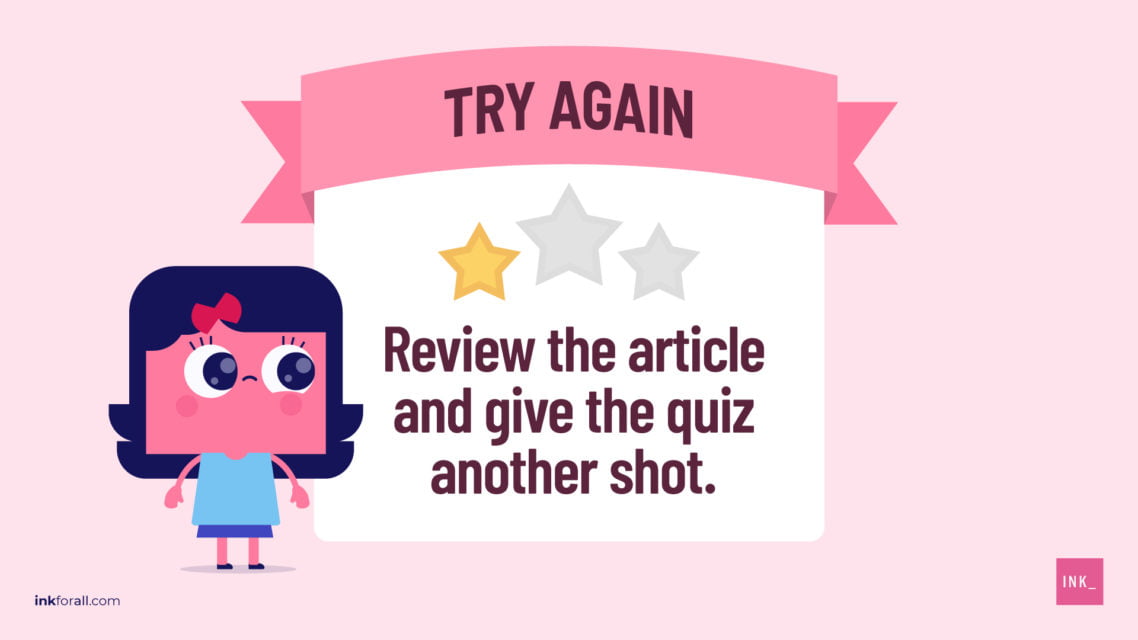Main Subordinating Conjunctions Takeaways:
- Subordinating conjunctions (SC) are also known as transition words. They connect dependent and independent clauses.
- Conversely, coordinating conjunctions are different. They join clauses of equal importance.
- There are seven main types of subordinating conjunction and about 50 different common examples.
- You can start a sentence with a this type of conjunction.
- This type of conjunction is also used in complex sentences.
Subordinating conjunctions sound tricky, but they’re easy to master. In this article, we’ll explore the main types and look at a few subordinating conjunction examples. We’ll also answer a few of your burning grammar-related questions along the way.
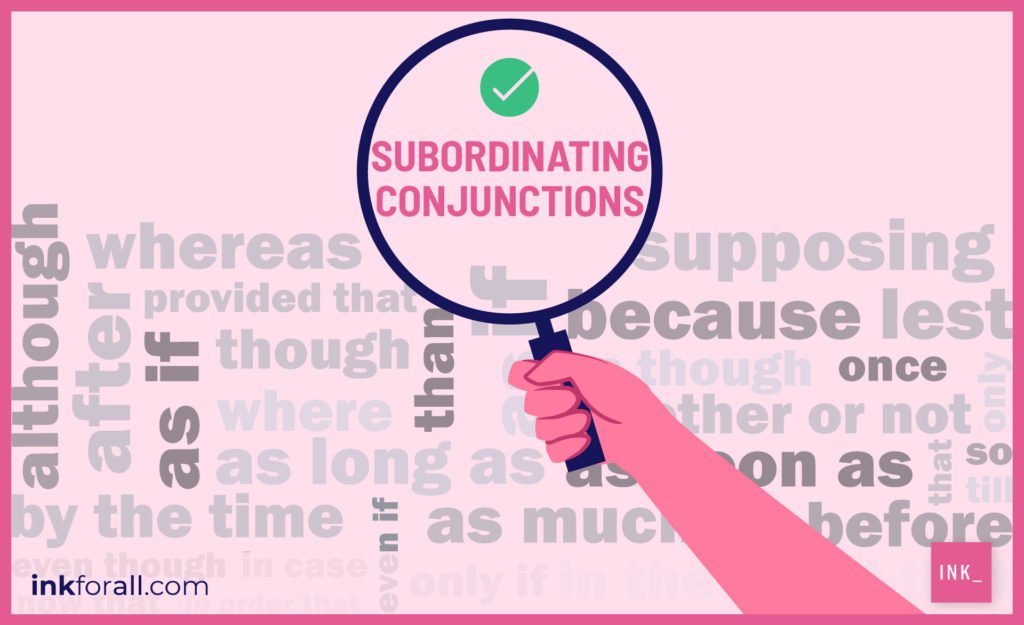

What Is a Subordinating Conjunction?
Subordinating conjunctions are also known as transition words (words like “because,””when,” “although,” and “despite”). They link dependent clauses to independent clauses — and they always go in front of dependent clauses. Independent clauses are complete sentences — fully formed ideas. In contrast, dependent clauses don’t work as stand-alone sentences; instead, they add information to independent clauses.
Let’s see that relationship in action:
The dependent clause — including its subordinating conjunction — in the example immediately above is “whosework she appreciated.” Clearly that doesn’t work as an autonomous sentence. Conversely, the independent clause — “Rachel paid her gardener” — is a perfectly good sentence all by itself.
Other names for this type of conjunction include transition words, conjunctive adverbs, and adverbial expressions.
What Are the 7 Subordinating Conjunctions?
The seven major varieties of subordinating conjunctions are: comparison, concession, condition, time, place, manner, and reason. It’s worth noting that, technically, there are many types of subordinating conjunctions. All of them connect subordinate (also known as dependent) clauses to main (also known as independent) clauses.
- Comparison: Whereas, whether, than
- Concession: Though, although, even though
- Condition: Unless, if, in case
- Time: After, before, until
- Place: Where, wherever
- Manner: How, as if, as though
- Reason: Because, so that, since
How To Punctuate Subordinating Conjunctions
A subordinating conjunction doesn’t need punctuation (comma), especially if it appears in the middle of the sentence. However, if it appears at the beginning of the sentence, the comma is placed after the whole subordinate clause. To reiterate, a subordinate clause or dependent clause is a group of words that can’t stand on its own in a sentence.
How Many Subordinating Conjunctions Are There?
There are lots of subordinating conjunctions in the English language: About 50 of them are considered common, and the rest are more obscure. You probably already include the usual suspects in your writing without even noticing. Subordinating conjunctions can be one, two, three, or even four words long. Examples include: where, assuming that, if, in case, while, although.
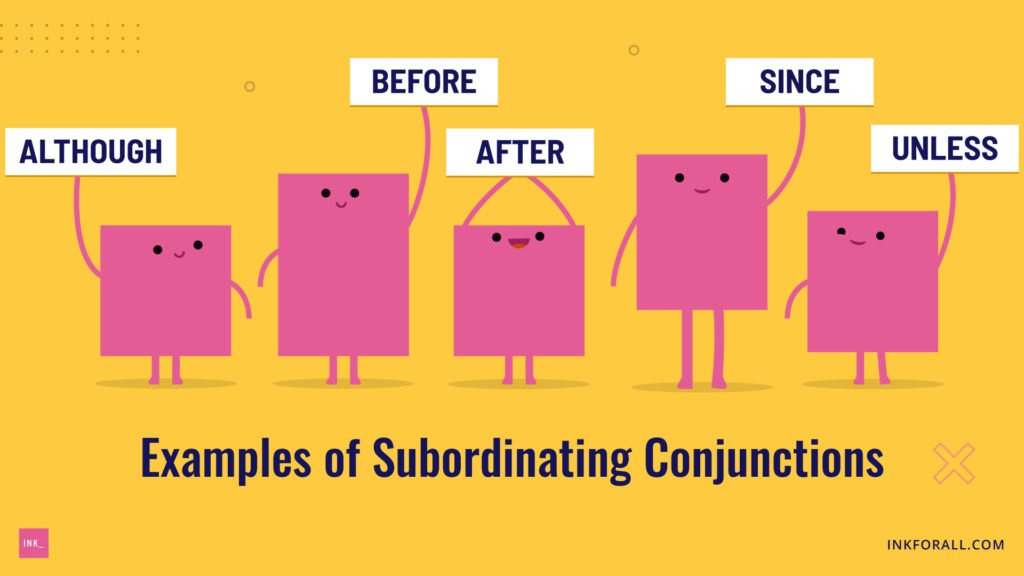

What Is a Subordinating Conjunction Example?
Subordinating conjunctionexamples include after, if, as, that, whenever, wherever, because, and since. This type of conjunction is used at the beginning of subordinate clauses. In other words, they sit in front of the subordinate clause in a sentence made of two clauses.
Here are examples of subordinating conjunctions in action:
What are 5 Examples of Subordinating Conjunctions?
Five examples of subordinating conjunctions are: before, after, whenever, where, and while. More examples include because, until, and since. Other examples include adverbial expressions like as long as and so that.
Single-Word Conjunctive Adverbs
Here are a few sentences with single-word subordinating conjunctions in them:
Adverbial Expressions
Some subordinating conjunctions are two-word, three-word, or even four-word phrases, like:
- So that
- Even if
- Now that
- As long as
- In as much as
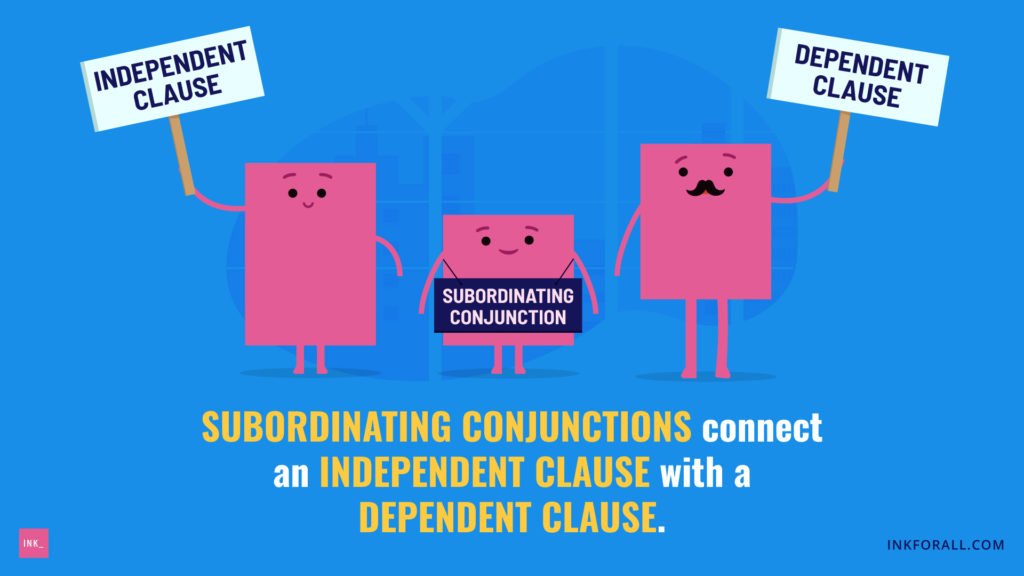

What’s the Difference Between Coordinating and Subordinating Conjunctions?
Coordinating conjunctions and subordinating conjunctions both link one part of a sentence to another. But, there is a clear and important difference. On one hand, coordinating conjunctions join clauses of equal importance. In other words, each clause could stand alone as an independent sentence. On the other hand, subordinating conjunctions join clauses of unequal importance (subordinate or dependent clause with an independent clause).
Let’s compare and contrast a couple of examples. First, a coordinating conjunction used in a sentence:
Now, a subordinating conjunction:
Here’s another coordinating conjunction in the wild:
In contrast, this is a subordinating conjunction:
What Conjunctions are Used in Complex Sentences?
Subordinating conjunctions are used in complex sentences. This is because combining one clause with a subordinating conjunction creates an incomplete sentence. Therefore, the sentence needs another clause to complete its meaning. When you join two clauses using this kind of conjunction, you get a complex sentence.
What are the 3 Subordinate Clauses?
The 3 subordinate clauses are adjective, adverb, and noun. When a subordinate clause modifies a noun or a pronoun, it’s an adjectival clause. Similarly, when it modifies an adverb, its an adverbial clause.
Can Subordinating Conjunctions Start a Sentence?
Yes, you can start a sentence with a subordinating conjunction. This rule applies to both informal and academic writing. If you decide to begin a sentence with a subordinating conjunction, put a comma after the first (subordinate) clause, like this (“WheneverBen went to school, Bill rode his bicycle”). However, if you swapped the clause placement, you’d remove the comma (“Bill rode his bicyclewheneverBen went to school“).
Subordinating conjunctions feel tricky at first, but they’re not too hard to get the hang of. To recap, this type of conjunction links main (independent) clauses with dependent (subordinating) clauses — the subordinating clause explains the main clause.
A Quick Subordinating Conjunction Quiz to Help you Master its Usage
Subordinating Conjunction Question #1
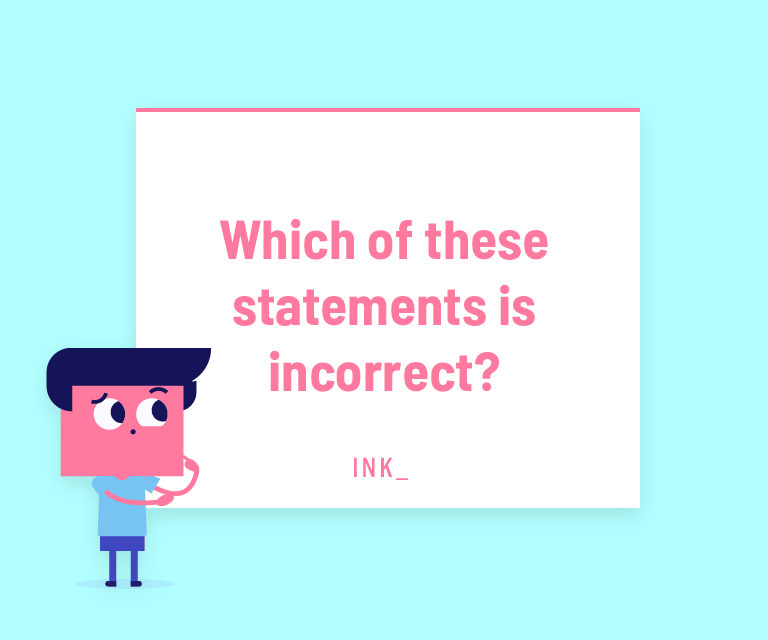

The answer is A. Dependent clauses add information to independent clauses. They can’t function as stand-alone sentences.
Subordinating Conjunctions Question #2
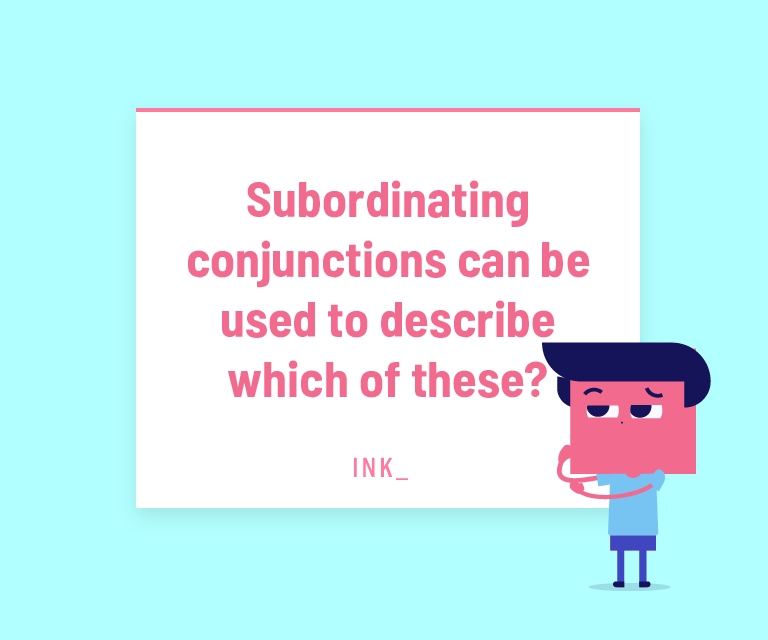

The answer is D. All of the options above. Subordinating conjunctions can be used to describe or explain events relating to any of these.
Subordinating Conjunction Question #3
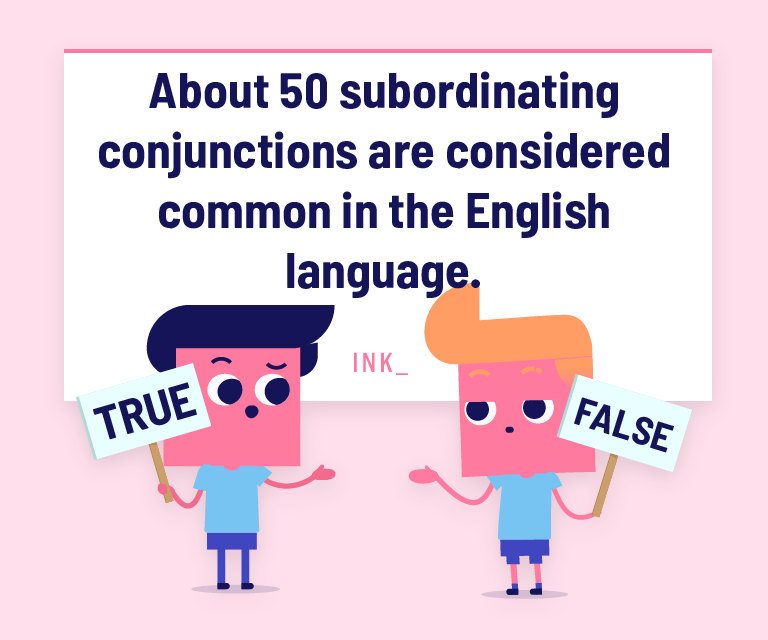

The answer is TRUE. There are about 50 subordinating conjunctions commonly used in the English language.
Subordinating Conjunctions Question #4
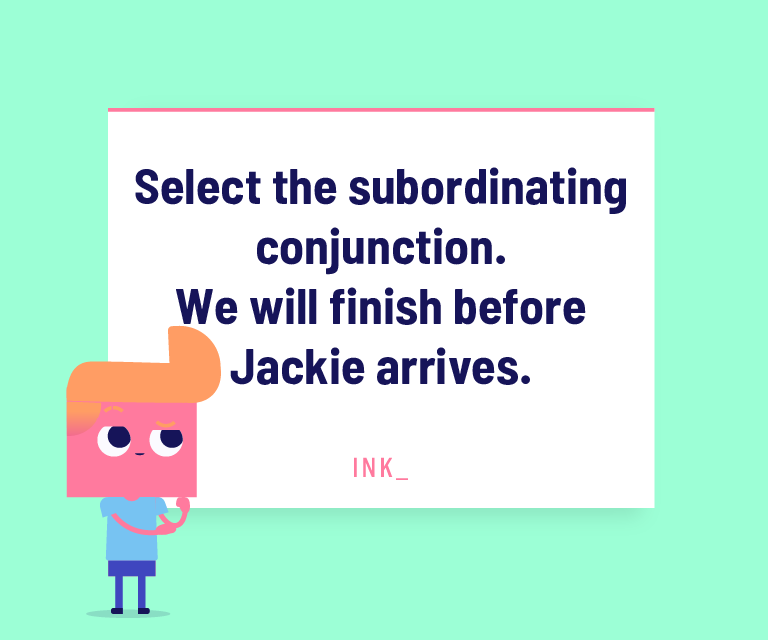

The answer is C. Before is a subordinating conjunction that references time.
Subordinating Conjunction Question #5
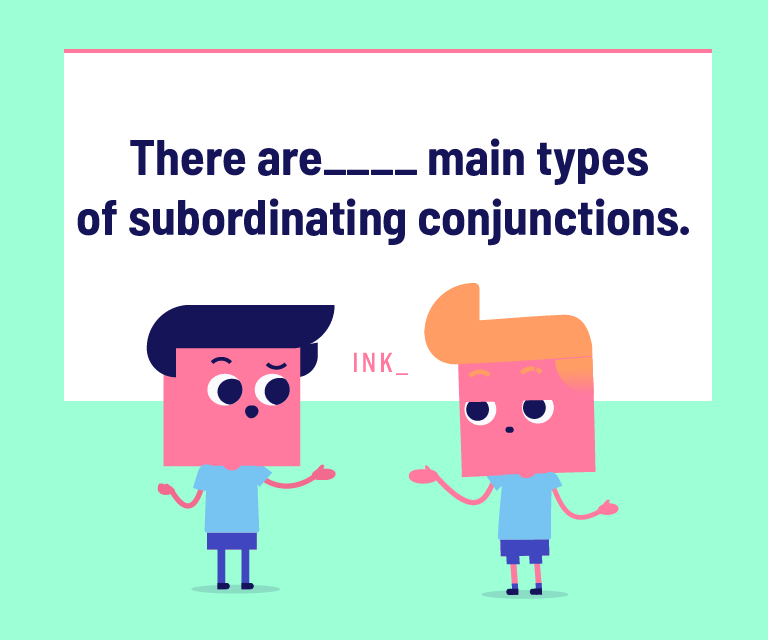

The answer is C. The seven major types of subordinating conjunctions include comparison, concession, condition, time, place, manner, and reason.
Subordinating Conjunctions Question #6
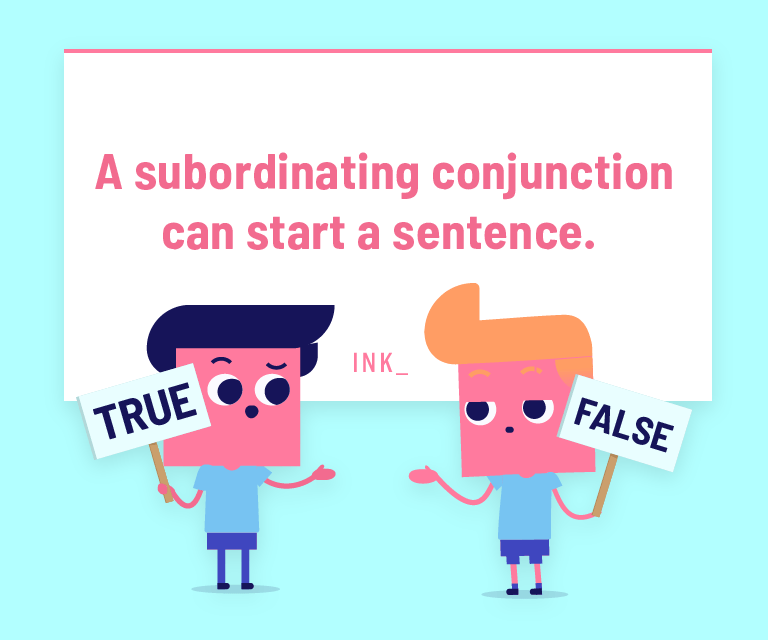

The answer is TRUE. You can start a sentence with a subordinating conjunction.


